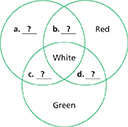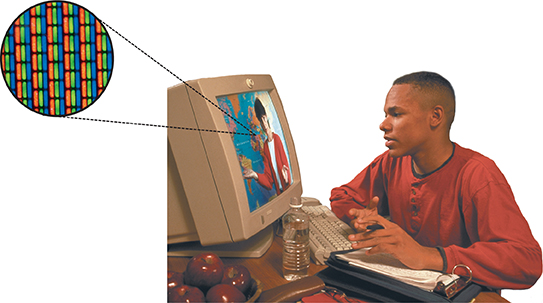18.4 Color
Reading Focus
Key Concepts
 How does a prism separate white light?
How does a prism separate white light? What determines the color of an object?
What determines the color of an object? What are the primary colors of light?
What are the primary colors of light? What are the primary colors of pigments?
What are the primary colors of pigments?
Vocabulary
dispersion
primary colors
secondary color
complementary colors of light
pigment
complementary colors of pigments
Reading Strategy
Venn Diagram Copy the Venn diagram below. After you read, label the diagram for mixing primary colors of light. Make a similar diagram for mixing primary colors of pigments.

Have you ever zoomed in on a color photograph displayed on a computer screen? If you have, you've seen that the photograph is made up of many tiny squares, called pixels, as shown in Figure 22. Your computer screen might be set to display 256 colors, thousands of colors, or even millions of colors. All of these colors are generated using various combinations of only three colors of light. If you were to print the same photograph, your printer would also use only three colors, plus black, to create the image out of tiny dots of ink. The three colors the computer uses are different from the three the printer uses. How can that be?
Figure 22 This student is looking at many colors on his computer screen. What he is actually seeing, however, are combinations of only three colors of light.





